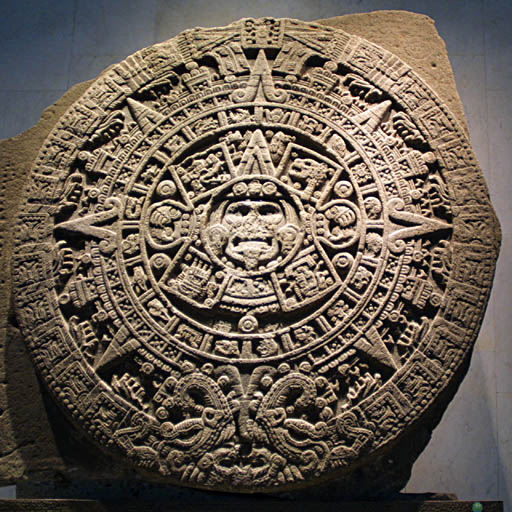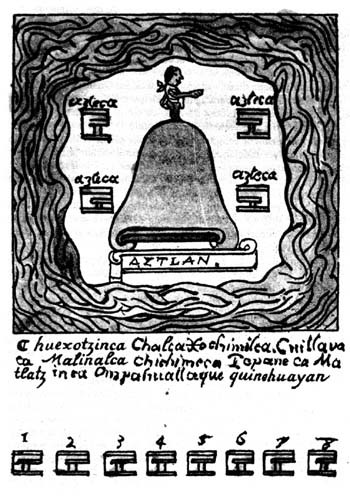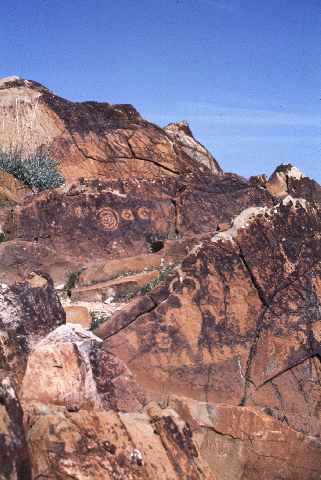Email Gringodeoro |
 Utah is a unique state in that there are a lot of tales of treasure and history surrounding it. There are plenty of stories from all over the world, but you must agree that, if even half of the superstition is true, Utah has a spectacular history! My intended purpose is to offer as many FACTS or information as close to fact as possible. Enjoy! |
||

Evidence of Aztecs in Utah Stories & proof of Spaniards in Utah Pioneers & Gold Uinta Mtn. Range Physical Evidence |
 
If you will remember back to 1521 when Cortez and his men made the final push to overcome Tenoch and after the great city was securely in his hands. Cortes then focused most of his efforts on procuring the rest of the Aztec treasure. He spent a great deal of time searching lakes to the north and historians have estimated that he searched upwards of 5,000 lakes in his efforts to locate the new location of the treasure...he never found it. My focus now will be on the location of the mythical "Aztlan." It is important to pin point this area because once the general area is known, not only would we know where the most likely place to look for this missing treasure is, but also an important part of American history would be enlightened. Although the "exact" spot where the Aztecas resided after their initial northern migration from the seven cities, approximately around 502 B.C., may be hard to prove, we can always piece bits of evidence together in order to form our own opinions. Many, many scholars from around the world have researched this issue and the general consensus seems to be that; if there was in fact an "Aztlan," it was probably situated around the four coners area. The evidences pertaining to that idea have been widely published. However, there is a new theory surfacing, that Aztlan may have been located on Antelope Island situated in the Great Salt Lake just out side of Salt Lake City Utah. Although I believe that if Aztlan truly existed, it would have been a region and not just a "spot," I think that this Island or Stansbury Island just to the south of it, would have been a good place to centralize their homeland. I will look at the evidences for and against this assumption, keeping in mind that at first I thought that there was no way that the Aztec's lived on Antelope Island! The main problem is, is that no records were saved concerning this mythical place and it wasn't until approxiamtely three years after the conquest that the Spanish had the natives make records of what their myths said about the homeland. So what the world has to go on is skimpy to say the least. I am hoping that I will be able to shed a little light on this subject. Archeological research keeps pushing back the date of man's arrival in the Great Basin, but the most widely accepted evidence dates the first human presence near the lake at about 10,000 years ago. (Robert E. Ford, www.colorado.edu) I have taken three trips out to Antelope Island and one to Stansbury Island. I would like to focus for now on the first of the two. The main piece of evidence that I have targeted is the word Aztlan itself and it's various meanings. There are two words here spliced together, the first being "Aztatl." The literal meaning of this word means "heron." But by placing the "an" at the end they are giving it place. So, it translates; "The Place of The Herons." The symbolic meaning of the word Aztlan means "The place of whiteness." Both meanings can be taken literally though. That is the way Nahuatl is spoken. What I also take from this phrase is that the Heron must be white and here is why. If you look up the Nahua word Aztatl it will usually be defined as being the Snowy Egret, which is technically a Heron, and is definately white. Another interesting fact is that this word in Nahua is closely related to the spanish word "garza" which surname usually translates to "dweller at the sign of the heron," but also refers to the Franklin Sea Gull!! In visiting Antelope Island, I payed close attention to the enormous bird population. There were quit a few species of "white" birds including an unimaginable population of gulls. I have not seen a Snowy Ergret around Antelope Island, but I have been told by park rangers that they do live here and enjoy bathing in salty waters. I did see, however, an abundance of Blue Herons and plenty of Sea Gulls. One interesting fact is that immature blue herons and snowy egrets closely resemble one another, except that snowy egrets have yellow feet and showy plumes. As for the whiteness of the area, well obviously, due to the saltiness of the the Great Salt Lake there are salt flats surrounding much of the Island. That would explain the whiteness, but I get the impression that the Aztec's put the main emphasis on the heron. While there I did quite a bit of prying. I couldn't over look the fact that there weren't any known Indian ruins on the Island. If there were no ruins or signs of ruins, then were did they live? Then I remembered mention of there being seven caves on the island and although I do not believe this area to be "Cibola," caves could have been used as shelter. According to the park rangers that I spoke with there are seven caves on the island. It is possible that these caves would have been used as homes, but the other reality is that there is quite a bit of ore on the island and some of these cavities could have been made after this time. The last portion of evidence I want to share is the issue of food. There is plenty of food and fresh water on the island. The land is very fertile as the island was once a volcano and crops have flourished there since the pioneer days. There are also three fresh water springs dispersed around the island. These would serve as drinking water to both Indian and the large population of Antelope. One of the first written descriptions of Antelope Island was made by a government mapper named John C. Fremont in 1845. He wrote: "There is at this southern end of the lake a larger peninsular island which the Indians informed me could at this stage of the water be reached on horseback. Accordingly... I took with me Kit Carson and a few men and rode... across the shallows.... On the island we found grass and water and several bands of antelope. Some of these were killed, and in memory of the grateful supply of food they furnished, I gave their name to the island." Buffalo were later introduced by Brigham Young. With this said, there is a collection of spear points at the ranch, which is located on the south end of the island, that have been found mainly around the springs of the island. This would indicate that some type of Indian hunted there. An interesting note is that there are two different types of arrow head. One set is a larger, "atlatl" type and the other group is considerably smaller. So if you ever wondered if life could have been sustained on this island the answer would be an astounding yes. But with that being said, the lack of ruins, the lack of petroglyphs and lack of aquatic life in the Great Salt Lake are three detrimental factors in this theory. There have been reports of fish in the lake, however. On April 21st 1848 a second Mormon scouting party visited the island. A Brother Bainbridge reported to have seen "large fish" at the south end of the lake. The party wanted to called the island,"the island Porpoise," but the name Antelope stuck.(Note: There are petroglyphs on Stansbury Island and fish could have been acquired nearby.)  Stansbury Island petroglyphs courtesy of Robert E. Ford. However, even though we cannot prove that this is what the Aztec's called "Aztlan," there are quite a few fragments of evidence that make this theory feasible. My humble opinion? It's plausible.  Email Gringodeoro
Email GringodeoroCopyright © 2000-2004 (Eric Nelson) all rights reserved. |